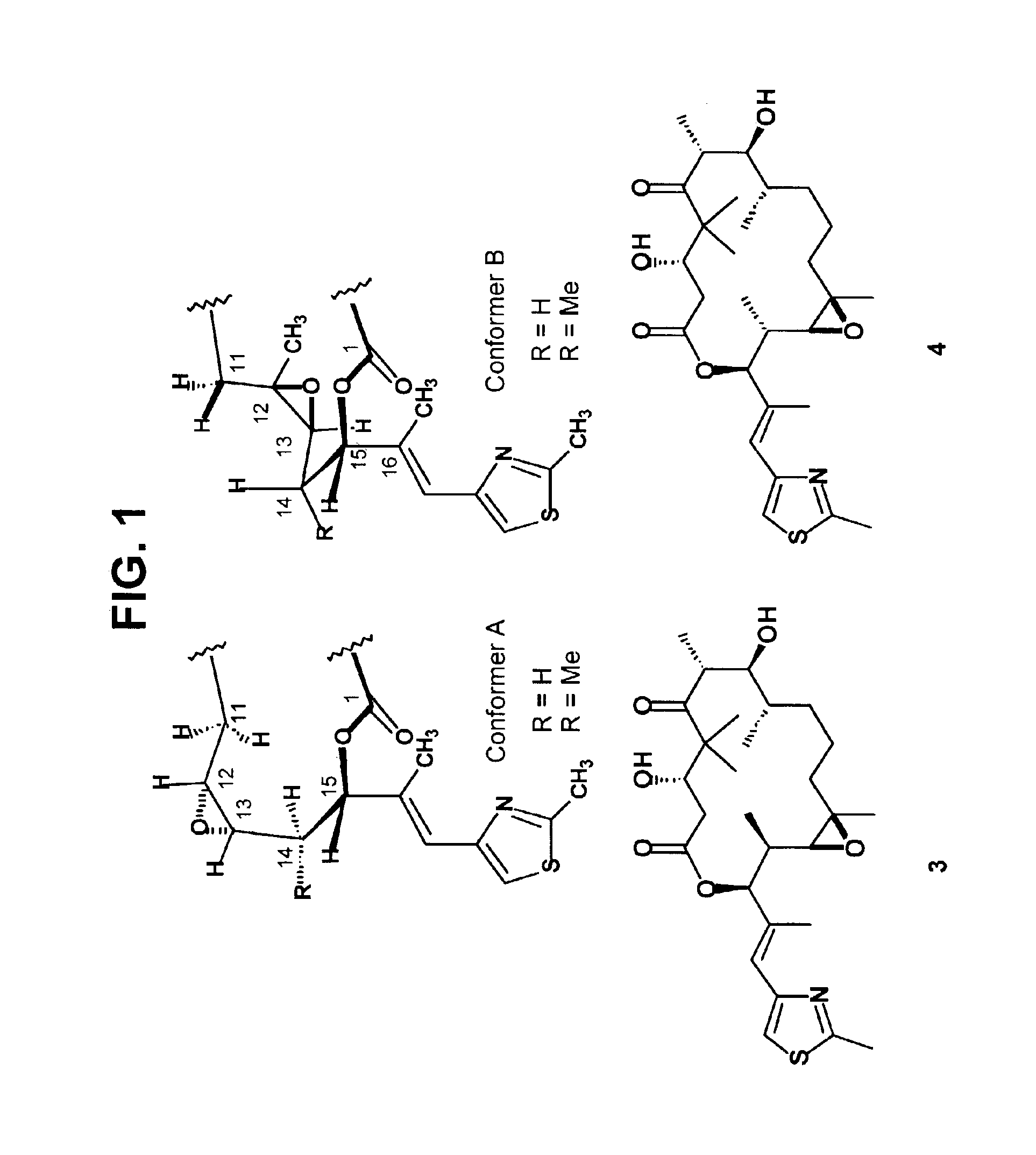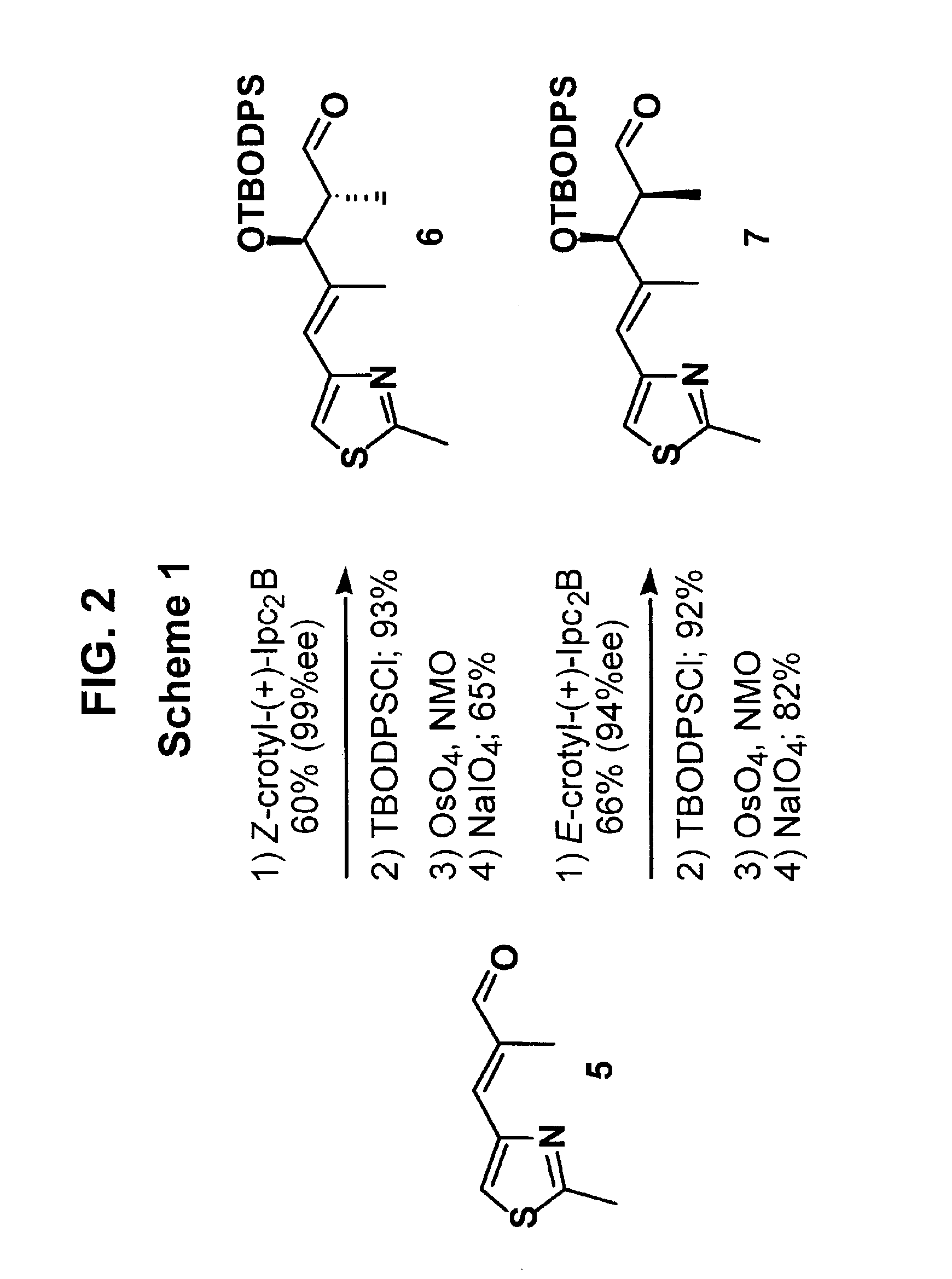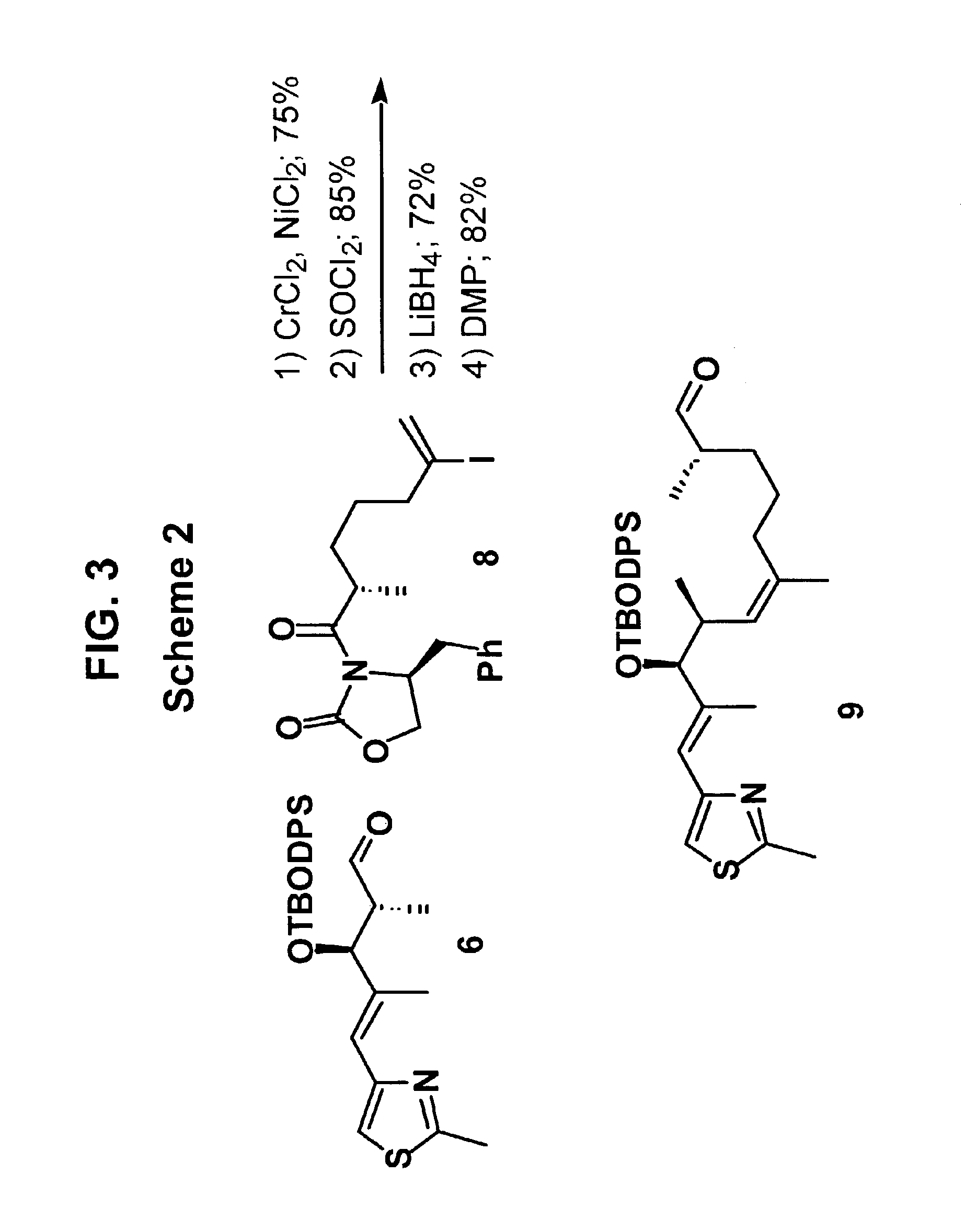Derivatives of epothilone B and D and synthesis thereof
a technology of epothilone and derivatives, which is applied in the field of derivatives of epothilone b and d, can solve the problems of delayed disease progression, low solubility in water, and general curative treatment of most cancers, and achieve the effect of effective cancer chemotherapy
- Summary
- Abstract
- Description
- Claims
- Application Information
AI Technical Summary
Benefits of technology
Problems solved by technology
Method used
Image
Examples
example 1
[0049](R)-C14-methyl epothilone B (epothilone B derivative 3) was synthesized using a method shown in Schemes 1, 2 and 3 of FIGS. 2, 3 and 4, respectively.
[0050]Readily available thiazole aldehyde 5, a common intermediate in several synthetic routes to these epothilone, is the point divergence for the synthesis of epothilone B derivatives 3 and 4 as shown in Scheme 1. Brown asymmetric crotylboration9 efficiently controlled the enantioselectivity as well as the diastereoselectivity of the C14, 15 stereogenic centers. Protection of the secondary hydroxyl as a t-butoxydiphenylsilyl ether followed by oxidative cleavage of the terminal alkene provided aldehydes 6 and 7.
[0051]The conversion of aldehydes 6 and 7 to epothilone B derivatives 3 and 4, respectively, proceeded though identical synthetic sequences. Only the synthesis of epothilone B derivative 3 from aldehyde 6 is described below and shown in Schemes 2 and 3, of FIGS. 3 and 4, respectively. However, (S)-14-methyl epothilone B (e...
example 2
Materials and Methods
[0059]Cell lines and culture conditions: Human breast carcinoma cell line MCF-7, multi-drug resistant breast carcinoma cell line NCI / ADR, non-small cell lung carcinoma cell line NCI-H460 and glioma cell line SF-268 were obtained from the National Cancer Institute. All cell lines were maintained in RPMI-1640 medium (Gibco / BRL, Rockville, Md.) supplemented with 2 mM L-glutamine, 25 mM HEPES and 10% FBS (Hyclone, Logan, Utah). Cells were maintained in a humidified incubator at 37° C. in 5% CO2.
[0060]Cytoloxicity assays: Tumor cells were seeded in 100 μl at 5000 (MCF-7), 7500 (NCI / ADR), 5000 (NCI-H460) and 7500 (SF-268) cells per well in 96-well plates. Cells were allowed to adhere for 24 hours. Each compound ranging from 0.001 to 1000 nM in 100 μl was added to cells in triplicate wells. After 3 days, cells were fixed at 4° C. for 1 hour with 10% trichloroacetic acid and then stained with 0.2% sulforhodamine B (SRB) / 1% acetic acid for 20 minutes at room temperature....
PUM
| Property | Measurement | Unit |
|---|---|---|
| temperature | aaaaa | aaaaa |
| multidrug resistance | aaaaa | aaaaa |
| solubility | aaaaa | aaaaa |
Abstract
Description
Claims
Application Information
 Login to View More
Login to View More - R&D
- Intellectual Property
- Life Sciences
- Materials
- Tech Scout
- Unparalleled Data Quality
- Higher Quality Content
- 60% Fewer Hallucinations
Browse by: Latest US Patents, China's latest patents, Technical Efficacy Thesaurus, Application Domain, Technology Topic, Popular Technical Reports.
© 2025 PatSnap. All rights reserved.Legal|Privacy policy|Modern Slavery Act Transparency Statement|Sitemap|About US| Contact US: help@patsnap.com



